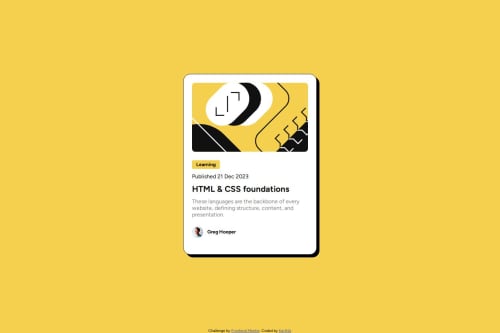Submitted over 1 year agoA solution to the Blog preview card challenge
Blog Preview Card Component Using HTML and CSS
@karthickg24

Solution retrospective
What are you most proud of, and what would you do differently next time?
I m very much happy to be able to complete the solution in quick span of time
What challenges did you encounter, and how did you overcome them?Challenges are
- to set width for different screen sizes
- to set style when doing mouse-enter
Regarding the spacing between each content. Need suggestions on how to improve on the CSS Skills.
Code
Loading...
Please log in to post a comment
Log in with GitHubCommunity feedback
No feedback yet. Be the first to give feedback on karthickg24's solution.
Join our Discord community
Join thousands of Frontend Mentor community members taking the challenges, sharing resources, helping each other, and chatting about all things front-end!
Join our Discord